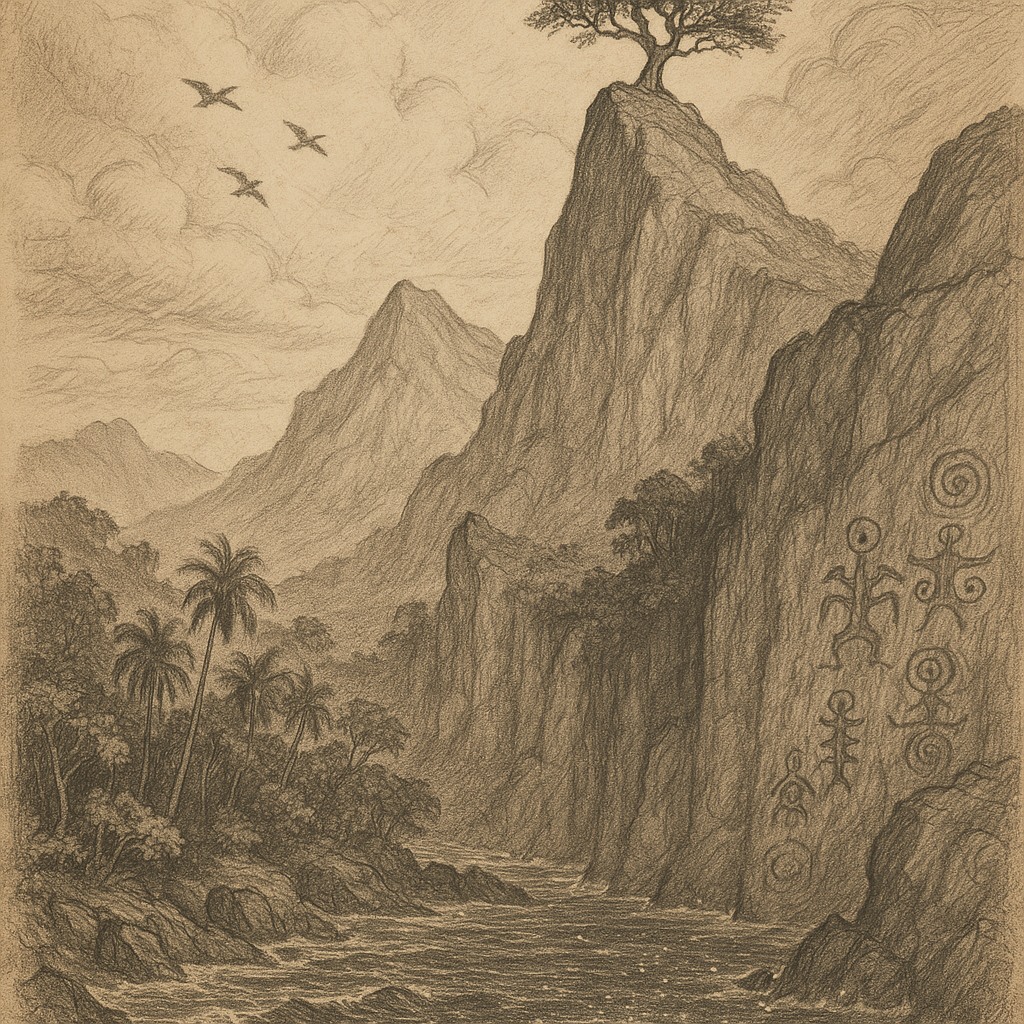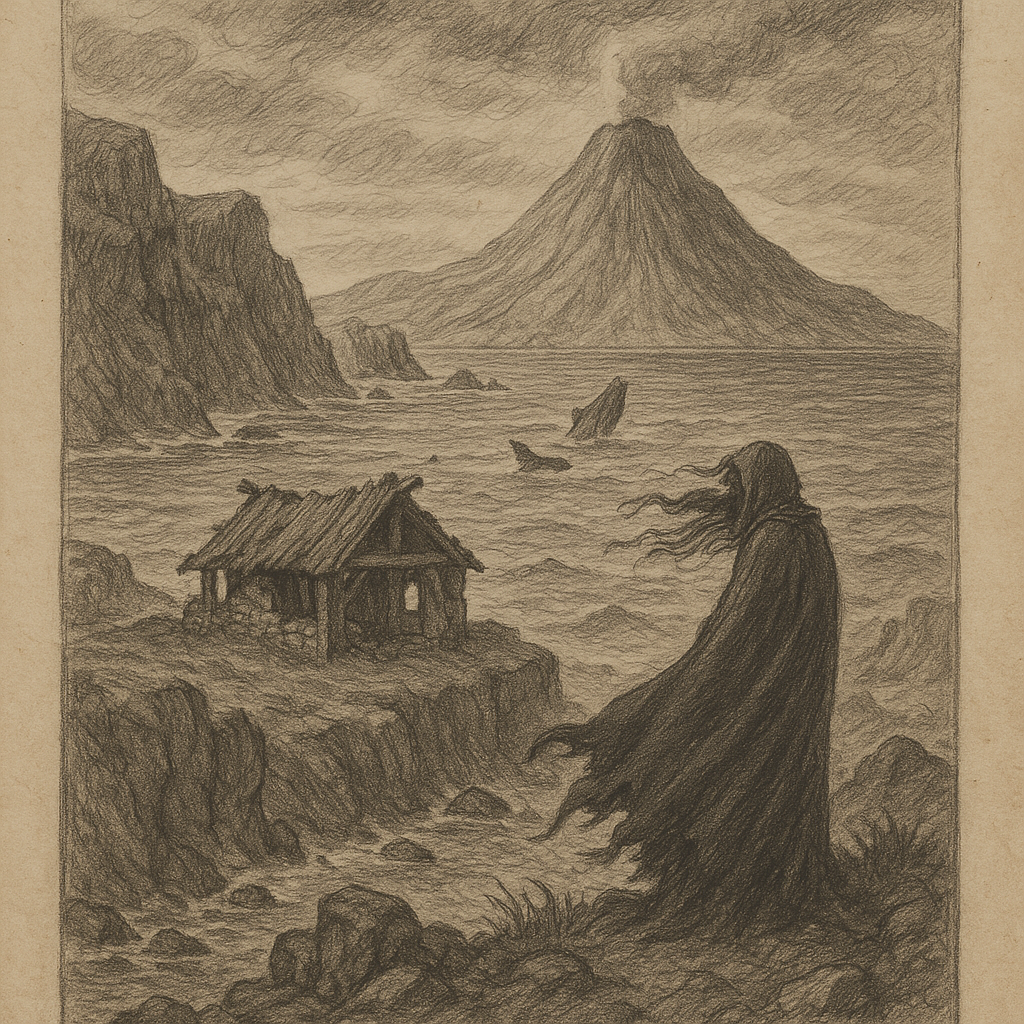Motu Ihupuku: The Forgotten Gem of the South Pacific
Motu Ihupuku is a remote and largely uncharted island hidden deep within the South Pacific Ocean. Shrouded in mystery and protected by its isolation, the island remains one of the last untouched corners of the world, offering an unparalleled glimpse into ancient natural and cultural heritage. Let us delve into the secrets, geography, ecology, and legends of this enigmatic place.
Location and Geological Formation
Motu Ihupuku is situated approximately 1200 kilometers southeast of Tahiti and around 1500 kilometers northwest of Easter Island, resting at the nexus of the Polynesian Triangle. The island is part of a submerged volcanic archipelago, lying above a submarine ridge formed by centuries of tectonic activity along the Pacific Plate’s boundary with the Nazca Plate.
The island itself is the emergent summit of a dormant stratovolcano, with steep cliffs rising dramatically above the surrounding ocean. It has a total land area of just over 11 km², and its highest point — Mount Teiho — reaches an elevation of 438 meters above sea level. The terrain is rugged and deeply fissured, with ancient lava flows, dense forested uplands, and sheer sea-facing cliffs that make approach by boat extremely difficult.
Climate and Ecology
Motu Ihupuku enjoys a warm tropical climate, tempered year-round by maritime winds. Rainfall is moderate but sharply seasonal, with the wet season bringing lush growth and exceptional biodiversity. Due to its isolation, the island remains ecologically pristine and supports a range of endemic flora and fauna.
Botanists have recorded over 300 plant species on the island, many of which are unique to Motu Ihupuku, including the Ihupuku fern (Pteris ihupukuiensis) and the Flame Petal Orchid. Birdlife is similarly abundant — the island is a nesting ground for the rare Ihupuku storm petrel and the crimson-crowned honeycreeper, species not found anywhere else. Along the coast, green sea turtles nest in secluded coves, while spinner dolphins playfully leap through the surf just offshore.
Human Presence and Accessibility
Motu Ihupuku has no permanent residents. Historically, Polynesian wayfarers are believed to have visited the island sporadically, using it as a temporary waypoint during trans-oceanic voyages. However, there is no evidence of permanent settlement. Today, access is tightly restricted: only scientific researchers with conservation permits from the Polynesian Marine Sanctuary Authority are allowed to land.
Due to strong surrounding currents and the absence of natural harbors, vessels must anchor offshore while expedition members are ferried to land under carefully controlled conditions. Any exploration is guided by strict environmental regulations to prevent human impact on the fragile ecosystems inherent to the island.
Interesting Facts about Motu Ihupuku
Despite its obscurity, Motu Ihupuku has sparked intrigue among marine biologists, ornithologists, and even cryptozoologists due to a set of unique and curious characteristics:
– The coastal waters of Motu Ihupuku exhibit unusually high bioluminescence, with glowing plankton lighting up entire reef systems during the new moon.
– A hydrothermal vent field lies just 7 kilometers offshore, hosting previously undiscovered deep-sea organisms, including an iridescent crustacean dubbed “Ihupuku’s Phantom Crab.”
– Ancient petroglyphs etched into volcanic rock along the island’s southern cliff face depict celestial constellations and oceanic navigation maps, offering insight into ancient Polynesian seafaring knowledge.
– Satellite imagery has revealed a vast underwater “ring” structure surrounding the island, thought to be the caldera rim of the original volcano, estimated to be nearly 2 million years old.
Legends and Cultural Significance
Motu Ihupuku occupies a central place in several Polynesian oral traditions, particularly among the Rarotongan and Mangarevan peoples. Known in legend as “Te Motu a te Moemoeā” — the “Island of Dreams” — it was believed to be the final resting place for souls journeying across the ocean after death.
One story tells of Hine-Matua, a celestial voyager who sought refuge on Motu Ihupuku after being exiled from her home island. She is said to have planted a sacred tree atop Mount Teiho, from which dreams flowed like mist into the sky, guiding lost travelers. Today, that tree — or a mythic version of it — appears in chants and songs preserved through generations.
Other legends speak of a hidden freshwater spring on the island, known only to ancient priest-navigators, which granted visions of the future to those who drank from it beneath the moonlight. Though such a spring has never been documented by scientists, its story continues to captivate traditional storytellers and scholars alike.
Conservation and Future Outlook
Due to its ecological uniqueness and cultural importance, Motu Ihupuku was designated a Class A Marine Preserve in 2012 by the Polynesian Marine Sanctuary Network. Conservation efforts focus on eliminating invasive species introduced by seabirds or transient vessels and maintaining the integrity of both terrestrial and marine habitats.
While large-scale tourism is unlikely due to the island’s remoteness and vulnerability, several micro-expeditions organized by indigenous councils and environmental NGOs aim to raise awareness of Motu Ihupuku’s significance. New generations of Polynesian leaders are embracing the island as a powerful symbol of connection to their ancestral past and of environmental stewardship for the future.
Conclusion
Motu Ihupuku remains an inspiring testament to the untouched beauty and deep wisdom of the Pacific’s hidden frontiers. With its dramatic landscapes, rare species, and enduring legends, the island stands as both a sanctuary of biodiversity and a beacon of cultural heritage. In a world rapidly losing its wilder corners, Motu Ihupuku continues to whisper the stories of ocean-born dreams to those who listen.



